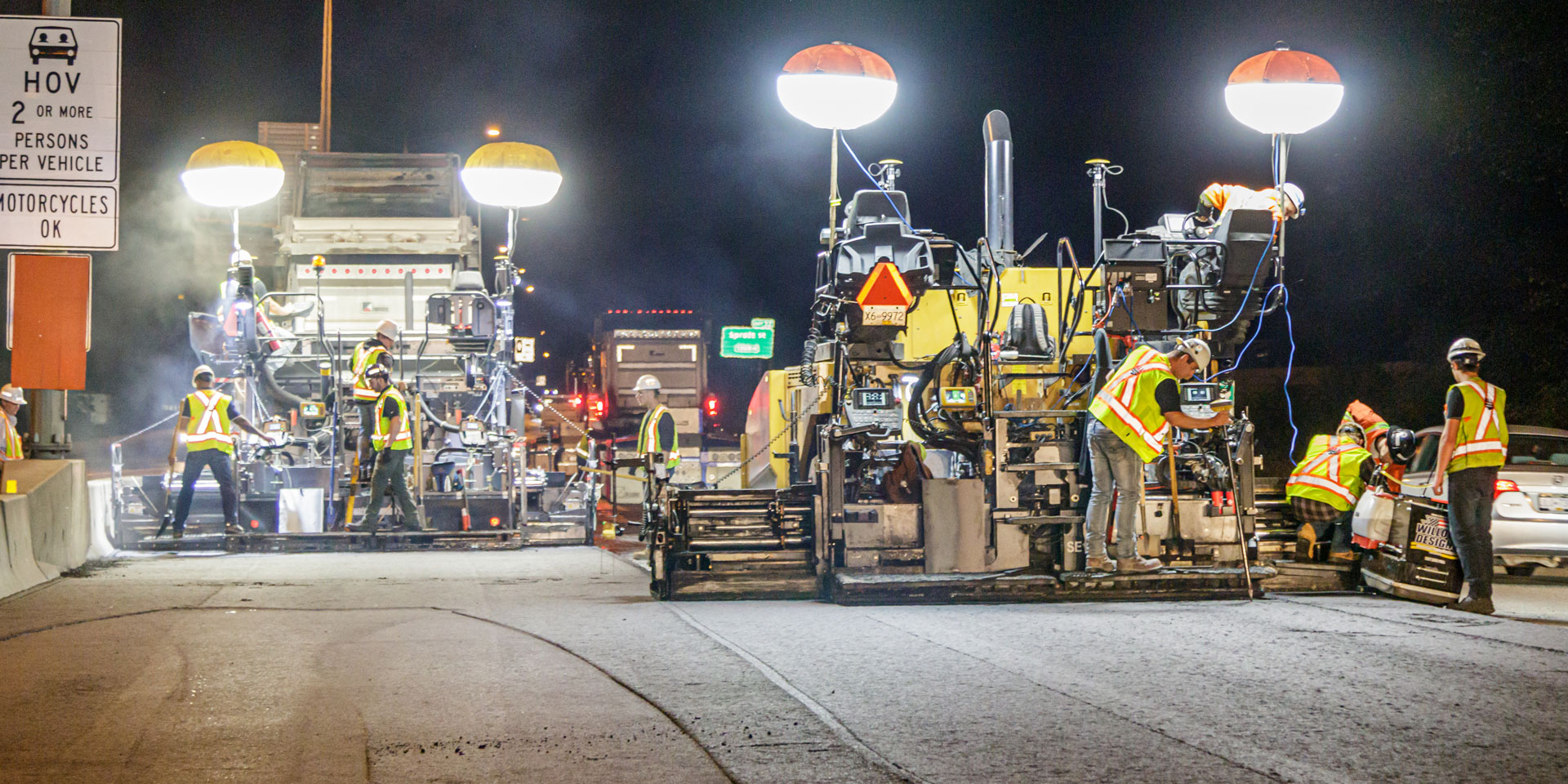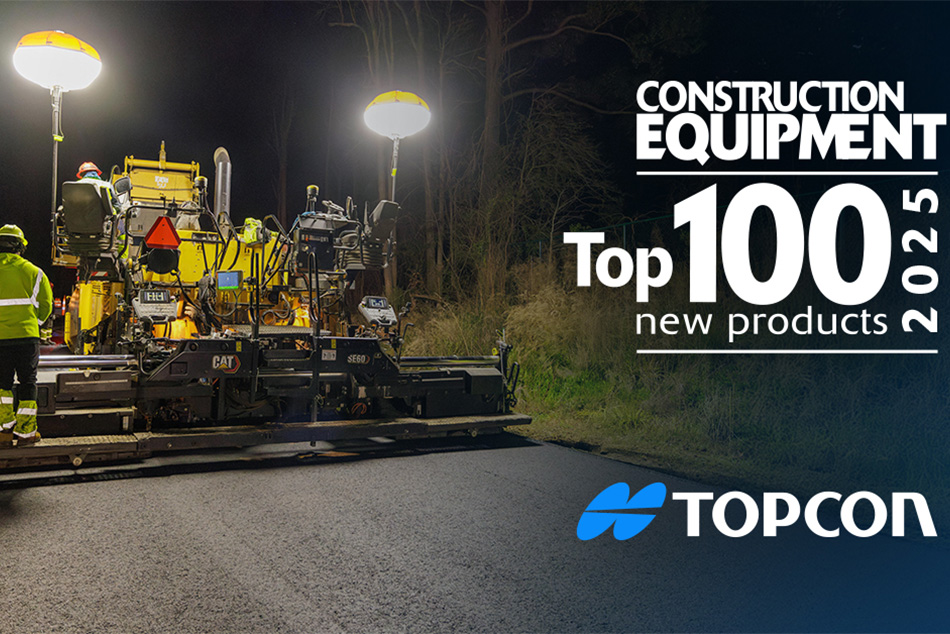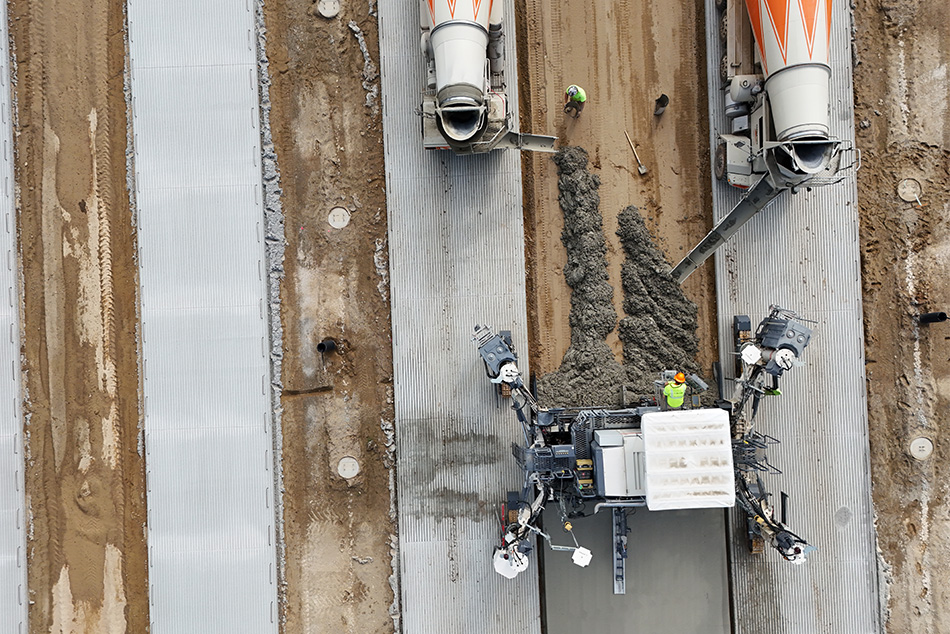When All Roads Construction was established, its goals were simple: to provide excellent service, to consistently create a product about which they and their customer could be proud, and to employ whatever technology was needed to make those two things happen. Today, a mere three years later, the company has not only proven more than capable of achieving those objectives, it has also opened the eyes of its peers to the alternative solutions available for traditional problems. Nowhere was that more evident than on a recent high-profile overlay project, rife with time constraints, seemingly insurmountable logistical demands, and the threat of crushing economic penalties. Yet, the company sought out the best solution to the problems at hand, found it in a LiDAR-based technology called SmoothRide from Topcon Positioning Systems and got accolades from their customer, the general public — and their competition. A smooth move by anyone’s standards.
"That last point became critical early on when we were presented with the tonnages of asphalt allotted for the project."
Stephen Hayes, Superintendent, All Roads Construction
Traffic: 2021 BC
In Vancouver, a city with the dubious distinction of having the worst traffic congestion in all of Canada, it’s been estimated that rush hour drivers spend a whopping 6.2 days per year more in traffic than normal commuters. Not surprisingly, much of that wasted time is spent on Highway 1, part of the Trans Canada Highway and the main artery into and out of the city. Handling more than 90,000 vehicles per day, a sizeable section of the highway was recently slated for a long-overdue resurfacing, complete with a laundry-list of challenges, according to Denis Labelle, the company’s operations manager.
“This project was linked to a much larger one that took place back in 2015,” he said. “That work, which included construction of the Port Mann Bridge, also improved several interchanges into Vancouver. However, when that project was in progress, it was decided to only pave up to the intermediate lift. After having been in operation for more than five years, the Ministry of Transportation and Infrastructure felt that the road had settled to their satisfaction and they decided to overlay and top lift the entire section. That is what we were awarded the bid for: an overlay of 78 lane km of Highway 1 east of Vancouver near Burnaby.”
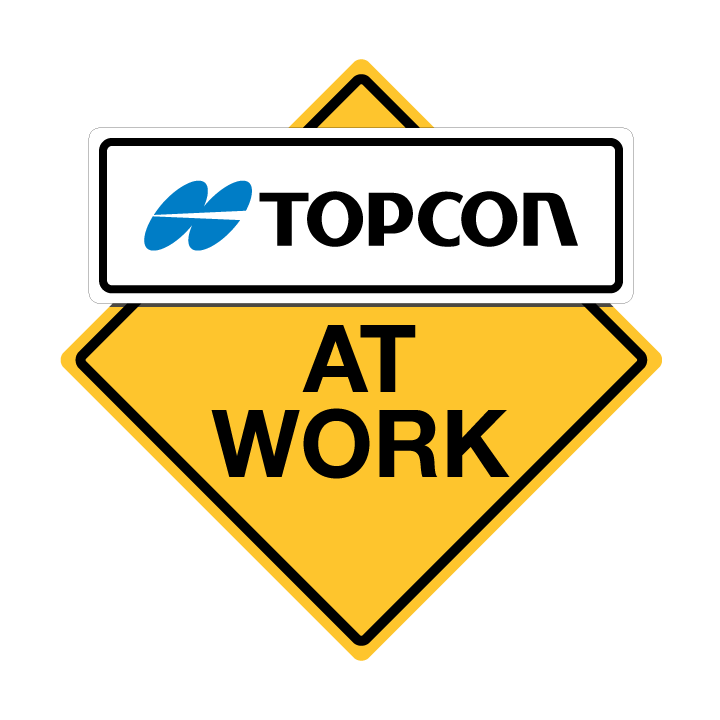
Because of the critical role Highway 1 plays moving traffic into and out of Vancouver, the Ministry chose to have all work done at night to avoid delays and disruptions. The production schedule, which was already daunting at seven hours, was made even more so by a dictate that all equipment had to be totally removed from the worksite during non-construction periods.
“When you factor in the time it takes to close lanes, offload equipment, set barriers, etc. to begin work — and then do the same thing in reverse at the end of each shift — our work window was suddenly reduced to four hours each night, with stiff penalties for exceeding those constraints. But we felt confident we could work within those parameters and ended up proving it each night.”
Positive Profiling
All Roads’ level of confidence was based on data received from the SmoothRide solution, a multi-step process that starts with a LiDAR scan — at a rate of 100 scans/second — of the entire road surface slated to be overlaid. Using an RD-M1 scanner attached to the rear of one of their company pickup trucks, scanning was easily and safely conducted in traffic, minimizing the need for costly lane closures. Once gathered, that data was processed and converted into a digital model, from which the company could determine, not just the way to achieve the highest quality, i.e., the smoothest ride possible, but also the volumes of material needed to make that happen.
“That last point became critical early on when we were presented with the tonnages of asphalt allotted for the project. Our projections indicated that we needed 108% of what the Ministry was allotting, which would have put us in a penalty-risk situation. After some convincing on our part, they gave us the additional mix we requested and, when the job was done, we were at 107.6%,” said Rod Stephens, president of All Roads. “Our numbers were that good.”
It’s worth noting that All Roads had done some advance legwork to make the Ministry aware of the SmoothRide technology they’d planned on using. Realizing their point could be best made with a demonstration, they invited Ministry personnel out to a “mill and fill” project happening in nearby Chilliwack. “By the end of that demo, they were believers in the concept,” said Stephens. “That helped us tremendously.”
A Different Perspective
One of the challenges any contractor faces is proving that they have the owners’ best interests in mind when making decisions. As shown, All Roads did that with their choice of paving solution and it did so again when laying out their plan for the actual pave. While the Ministry had its own paving sequence in mind, Labelle and his team offered an alternative that ultimately proved a better answer for the Ministry and for future ridership.
“The Ministry was very clear on how they wanted the job done,” he said. “They felt we should pave the inner shoulder and the HOV lane, then the fast lane and middle lane, then the slow lane and the outer shoulder. They wanted us to do it in three passes. Instead, we suggested doing the shoulder, HOV and fast lane, then the middle and slow lane. We left the outer shoulder for last to allow for coordinating all the barrier removals, which we felt worked very well.”
All Roads’ sequence also improved upon the quality of the finished product by minimizing the number of joints. As designed, the Ministry’s suggested sequence would have resulted in two joints in the live lanes.
“Ours reduced that to one by putting the second joint on the shoulder,” said Labelle. “The joint is always the biggest point of failure in a highway, so reducing that number to one for the length of the project was huge. In addition, using our sequence, we were able to get through the main part of the project quickly and then complete the shoulders at a slower pace. At the same time, however, traffic was able to ride on a completed road with lane markings, so the safety factor was enhanced as well.”
"We were paving so quickly that we had to make sure our rollers were able to keep up before the mat got cold."
Stephen Hayes, Superintendent, All Roads Construction
Don’t Look Back
Despite the jobsite constraints (daily installation and removal of 20 km of concrete barriers), production on the Highway 1 project was impressive: consistent rates of between 1,600 and 2,000 tons per four-hour work window. All Roads’ Stephens said much of the credit for that goes directly to the technology, in this case the SmoothRide solution.
“Letting the guys pave without worrying about what’s behind them was huge,” said Stephens. “Traditionally, paving is a very reactive concept; you are always looking behind you to verify what you’ve already placed and then adjusting accordingly. Because it is difficult to change on the fly, that doesn’t help with either your application rate or your smoothness. SmoothRide, on the other hand, is very proactive — it knows what it needs to get down and where. We had the surveyor periodically check, expecting to see a 50 mm mat (with compaction), and we were almost always dead on. In addition, as we mentioned, it helps dramatically reduce the risk of material shortages or overages.”
For the Highway 1 project, All Roads used a pair of 10-foot wide pavers: a Cat 1055 and a Vogele 200i. Stephens said the outstanding performance was not lost on the Ministry. “They were impressed not only with how quickly we were getting the job done, but also by how smooth a surface could be, given that speedy performance.”
The Color of Production
Had they not anticipated it, the impressive paving rates All Roads was getting could have had a detrimental effect on the compaction effort and, by extension, the quality of the product. However, working with Topcon and Brandt Positioning Group, All Roads utilized an intelligent compaction (IC) solution on their Hamm 110i and 140i rollers which kept both facets of the project working in sync with each other.
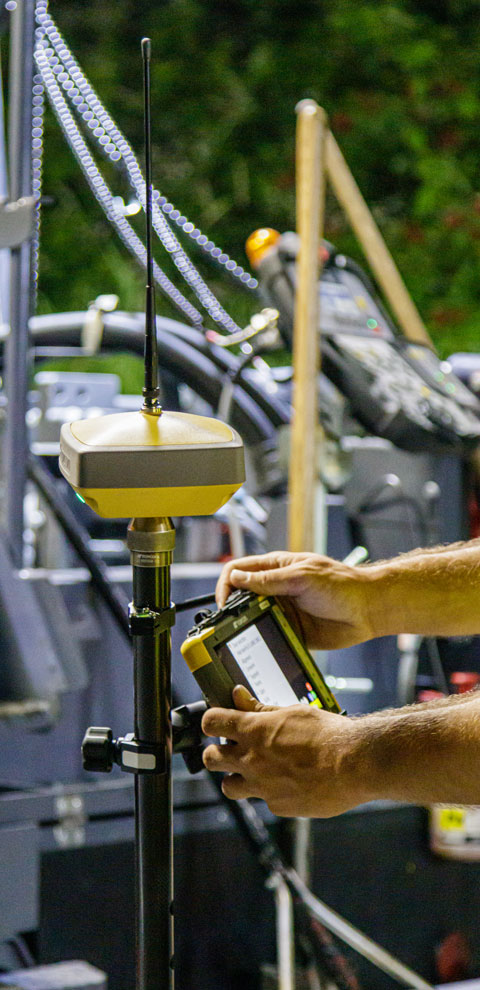
“We were paving so quickly that we had to make sure our rollers were able to keep up before the mat got cold. So we equipped all three of our rollers with IC which color codes passes from each machine and shares that data between all the compaction units. Doing so helped ensure that we were meeting our pass count and not slowing production by hitting areas that had already been compacted. Such wasted effort can not only result in material segregation, it can also slow the whole rolling train down, which slows the paving train down, and so on. It is critical that the rollers keep up with the paver — they ultimately dictate how fast we can pave.”
And, in a nod to both efficiency and accuracy, the same data gathered by the RD-M1 during the original scanning session was turned into the digital model used for the paving and compaction facets of the job.
The Next Generation
To hear them tell it, the benefits All Roads derived from the solutions used on the Highway 1 project go far beyond simply helping give the client what they asked for. Both Labelle and Stephens see the new technology as key in their ability to attract new talent to their company.
“It’s no secret that parents aren’t encouraging their children to work on a paving crew,” said Stephens. “We are seeing a generational gap in this industry. In about ten years, a good many of the experienced operators will be retiring and right now paving is not attracting new talent. But the younger generation understands joysticks and data and thrives on looking at controls and monitors. That’s one of the intangibles we get from using these solutions. The technology is new, it is intriguing and it can be very rewarding. We have seen an uptick in younger people calling us saying they want to be a part of our company because of what we offer in terms of technology.”
Labelle is also quick to acknowledge the support he and his team received in making the Highway 1 project happen. “This was a huge undertaking that we chose to tackle with new technology,” he said. “We have a great team that made it all work — I’d say one of the best teams in all the province. But kudos have to go to Topcon and Mark Piotto at Brandt for stepping up right from the start, walking us through the process step by step, and getting us the complete design which was at the heart of the whole project.”
As mentioned at the outset, the Highway 1 project garnered praise from the general public; unsolicited emails citing the pavement’s smoothness and comfort were a common occurrence. However, All Roads also heard from colleagues in the paving business — many of whom originally doubted they could do the job — congratulating them and asking them what made the difference.
“We are happy to tell them about the new technologies available to the paving industry,” said Labelle. “Our company has always believed that when one paving company benefits, we all benefit, so we share what we’ve learned. This is an amazing system that we have already used in other projects; it is a big part of how we do business now.”












